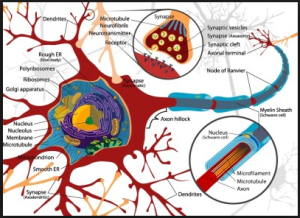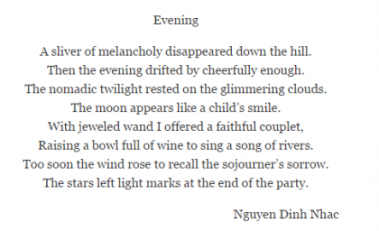 Last night I saw my father smiling broadly behind the wheel of a shiny Vetta. The chrome trims, the cream leather, accents the color of ocean made my admiration for the automobile felt normal, Vetta a normally coveted make of cars believable the way memory recalled in dreams reinvented itself effortlessly, imposing itself nonchalantly. Where those fragments of memory go when the dreams recede I do not know. I only know that bits of that dream hung on as I woke. The familiar sense of loss returned, but this time a little less pronounced because I was busy reaching toward the source of those fragments, the hippocampus of dreams where my father still writes poetry.
Last night I saw my father smiling broadly behind the wheel of a shiny Vetta. The chrome trims, the cream leather, accents the color of ocean made my admiration for the automobile felt normal, Vetta a normally coveted make of cars believable the way memory recalled in dreams reinvented itself effortlessly, imposing itself nonchalantly. Where those fragments of memory go when the dreams recede I do not know. I only know that bits of that dream hung on as I woke. The familiar sense of loss returned, but this time a little less pronounced because I was busy reaching toward the source of those fragments, the hippocampus of dreams where my father still writes poetry.
Is it the hippocampus of dreams that I should seek? To answer the question I would need to know whether my quest is for a long term explicit or implicit memory. The biology students among us already know that explicit memory involves conscious awareness, recording facts, events, objects, people and places via the hippocampus and adjacent cortex, whereas implicit memory is acquired unconsciously to store perceptual and motor skills, requiring not the hippocampus but the cerebellum, the striatum, and the amygdala. Do you find it difficult to reconcile the association of those tangible biological parts to such gossamer things like memory? It has been shown experimentally that the human brain contains about 86 billions neurons. A single neuron can have up to a thousand synapses, the units of information storage for short-term memory. The engineer in me dispassionately appraised the experiment’s method of counting neurons whereas that other part of me recited from memory the poems I read to my father, over and over again because his short term memory was not what it had been.
or implicit memory. The biology students among us already know that explicit memory involves conscious awareness, recording facts, events, objects, people and places via the hippocampus and adjacent cortex, whereas implicit memory is acquired unconsciously to store perceptual and motor skills, requiring not the hippocampus but the cerebellum, the striatum, and the amygdala. Do you find it difficult to reconcile the association of those tangible biological parts to such gossamer things like memory? It has been shown experimentally that the human brain contains about 86 billions neurons. A single neuron can have up to a thousand synapses, the units of information storage for short-term memory. The engineer in me dispassionately appraised the experiment’s method of counting neurons whereas that other part of me recited from memory the poems I read to my father, over and over again because his short term memory was not what it had been.
 As far back as I could remember, my father wrote poetry. He wrote each of us a poem to celebrate our births. He wrote about ordinary happenings such as the time when he showed his little sister the newly hatched chicks, about his empathy for the Quynh flowers that bloomed at midnight with no one watching, about running out of tea when a friend visited. Later, I think he found poetry cathartic as he tried to work out the helplessness he felt after finding refuge in another country, as evident in this poem.
As far back as I could remember, my father wrote poetry. He wrote each of us a poem to celebrate our births. He wrote about ordinary happenings such as the time when he showed his little sister the newly hatched chicks, about his empathy for the Quynh flowers that bloomed at midnight with no one watching, about running out of tea when a friend visited. Later, I think he found poetry cathartic as he tried to work out the helplessness he felt after finding refuge in another country, as evident in this poem.
 The moon was a recurrent image in his poetry. Even toward the end when his memory had all but gone, he smiled when I read one of his favorite stanzas of “Chinh Phu Ngam” to him, the one where the drumbeats on the long rampart shook the moon. By then he had stopped writing, and suddenly his numerous poems were no longer enough, sad poems, happy poems, and the poems he wrote for my mother, the love of his life for sixty years. She went first and I could not bear it when he asked after her, her for whom he wrote this poem:
The moon was a recurrent image in his poetry. Even toward the end when his memory had all but gone, he smiled when I read one of his favorite stanzas of “Chinh Phu Ngam” to him, the one where the drumbeats on the long rampart shook the moon. By then he had stopped writing, and suddenly his numerous poems were no longer enough, sad poems, happy poems, and the poems he wrote for my mother, the love of his life for sixty years. She went first and I could not bear it when he asked after her, her for whom he wrote this poem:
I got up early and went to work in the garden this morning. The blue sky, clear and crisp, made it impossible to brood. The autumn joy sedium, confined to a container, had withered. But at its base I spied some new green. I lifted it up gently and placed it securely under a piece of earth across from the heritage rose. It will bloom again next year. I thought about the many roses in my father’s garden. I still don’t know if there is an afterlife, but I am thankful that my father’s love of gardening and, especially, his love of poetry live on in me.

Thank you for helping me heal, dear Muse.
~~~~~~~~~~~~~~~~~~~~~~~~~~~~~~
Acknowledgement:
- The limpic drawing is from https://writersforensicsblog.wordpress.com/2013/05/17/ptsd-blame-your-hippocampusamygdala-complex.
- The moon drawing is from http://www.acclaimclipart.com.
- The sedium photograph is from http://www.edenbrothers.com.
- Most of the brain and memory information is from http://www.cell.com/cell/abstract/S0092-8674(14)00290-6?_returnURL=http%3A%2F%2Flinkinghub.elsevier.com%2Fretrieve%2Fpii%2FS0092867414002906%3Fshowall%3Dtrue.
- The number of neurons is from http://www.nature.com/scitable/blog/brain-metrics/are_there_really_as_many.
- The turquoise car photo is from https://www.pinterest.com/hrussom800208/mustang,

